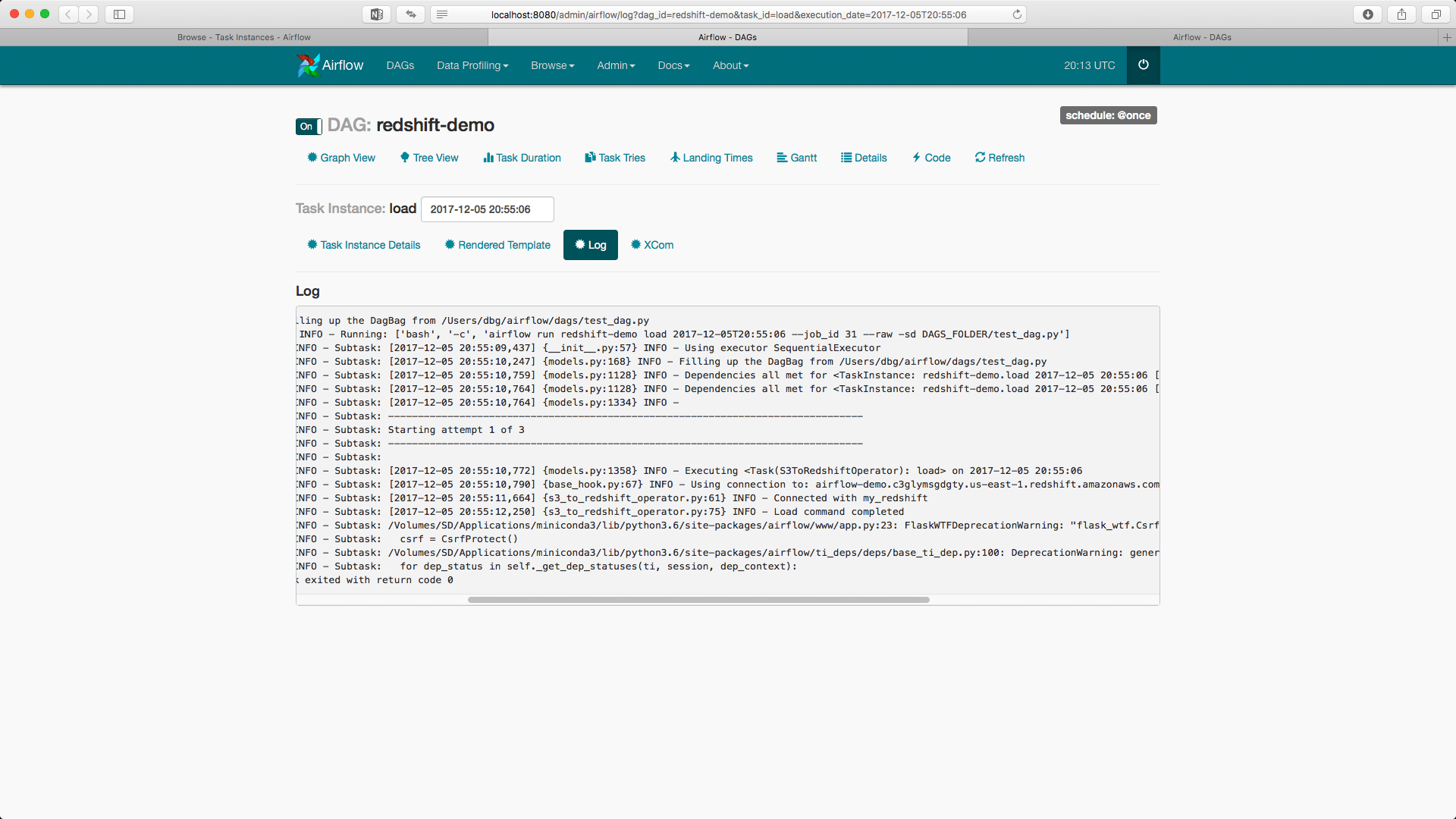

The default database is a SQLite database, which is fine for this tutorial. Once the database is set up, Airflow’s UI can be accessed by running a web server and workflows can be started. The database contains information about historical & running workflows, connections to external data sources, user management, etc. Run Airflowīefore you can use Airflow you have to initialize its database.

AIRFLOW ETL INSTALL
Similarly, when running into HiveOperator errors, do a pip install apache-airflow and make sure you can use Hive. PostgreSQL when installing extra Airflow packages, make sure the database is installed do a brew install postgresql or apt-get install postgresql before the pip install apache-airflow. You may run into problems if you don’t have the right binaries or Python packages installed for certain backends or operators. Leaving out the prefix apache- will install an old version of Airflow next to your current version, leading to a world of hurt. use pip install apache-airflow if you’ve installed apache-airflow and do not use pip install airflow. Make sure that you install any extra packages with the right Python package: e.g. You should now have an (almost) working Airflow installation.Īlternatively, install Airflow yourself by running: $ pip install apache-airflowĪirflow used to be packaged as airflow but is packaged as apache-airflow since version 1.8.1. Create the virtual environment from environment.yml:.To use the conda virtual environment as defined in environment.yml from my git repo: Either use a separate Python virtual environment or install it in your default python environment. Install AirflowĪirflow is installable with pip via a simple pip install apache-airflow. Make sure that you can run airflow commands, know where to put your DAGs and have access to the web UI. You can skip this section if Airflow is already set up. After installing the Python package, we’ll need a database to store some data and start the core Airflow services. Setting up a basic configuration of Airflow is pretty straightforward. A (possibly) more up-to-date version of this blog can be found in my git repo. It will walk you through the basics of setting up Airflow and creating an Airflow workflow, and it will give you some practical tips. This tutorial is loosely based on the Airflow tutorial in the official documentation.

It’s written in Python and we at GoDataDriven have been contributing to it in the last few months. Airflow is a scheduler for workflows such as data pipelines, similar to Luigi and Oozie.


 0 kommentar(er)
0 kommentar(er)
